Price-friendly Hokkaido fare at new Japanese import Mare Hachikyo
The famous Sapporo restaurant opens its first outpost at Palais Renaissance, featuring its viral overflowing ikura bowls
NEW RESTAURANT Mare Hachikyo #01-07 Palais Renaissance 390 Orchard Road Singapore 238871 Tel: 8428-0073 Open for lunch and dinner Mon to Sat: 12.30 to 3 pm; 7 to 10 pm. Closed on Sun.
[SINGAPORE] We can almost imagine how a job listing for Mare Hachikyo might read: Relevant cooking skills. Sushi experience not crucial. Good at frying and cost management. Must like people. Some shouting required, but at guests, not other staff. Introverts need not apply.
Just about everything we’ve heard about this new Hokkaido import has been about its trademark overflowing ikura rice bowls. And especially the way it’s served: with chefs yelling as they cajole you into consuming so much salmon roe, you get this inexplicable urge to crawl to a quiet corner and spawn.
This noisy perception of value-for-money is not new in Singapore, but Mare Hachikyo is said to have started it all 20 years ago in its original shop in Sapporo. And now it looks like this semi-casual eatery in Palai Renaissance is about to reverberate with the sounds of joyful harassment, a far cry from its genteel predecessor, the defunct Sushi Kimura.
In line with the times, Mare Hachikyo is price and choice-conscious. Lunch here can be had for as little as S$68 for three courses that you pick yourself, while a dinner splurge sets you back by S$228.
Meanwhile, little has changed decor-wise. You eat at the same sushi counter, now helmed by a handful of easy-going, gregarious chefs who slice, fry, gratinate and cook claypot rice when they’re not force-feeding you buckets of little orange pearls.
We’re there at lunch, which is much easier on the pocket. You won’t even mind springing for some of the supplements liberally sprinkled in the menu. But if you stick to the basics, S$68 gets you one starter, main and dessert; S$88 gets you an additional starter. For S$108, you get a second main on top of that. If you want the nine-course dinner omakase at lunch, you need to pre-book, which we didn’t.
Hachikyo has a likeable, laidback vibe. It doesn’t have that underlying social pressure you feel in an upscale sushi-ya – where the chef lifts his eyebrow ever so slightly when you choose the cheapest set. Here, you sit, have a temaki, followed by a bowl of crab ramen. No one judges.
The restaurant boasts a 90 per cent focus on Hokkaido ingredients. It’s not much of a game-changer, given how so much Japanese produce comes from there anyway. Sure, they offer you crab, but there’s crab, and there’s crab. If you can’t shake its claws while it spits bubbles and offers you its little plastic bracelet as a souvenir, it’s not going to be great. At Hachikyo’s prices, don’t get your hopes up.
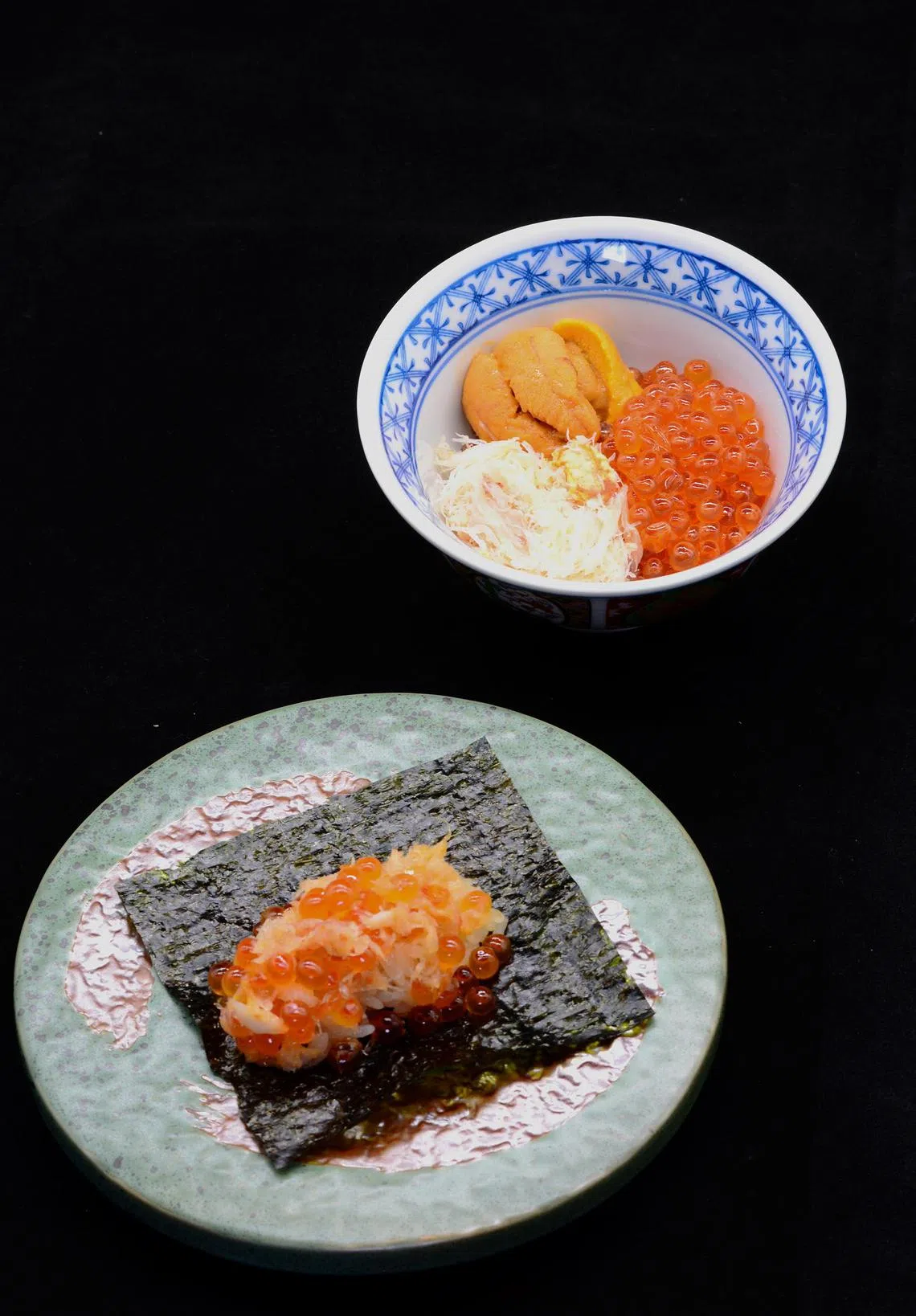
What you will get is a very pleasant meal for the money you spend. The food is strongest when they do as little as possible to it. Like its temaki starter, which is simply an open-face maki. Over a bit of rice on a toasted sheet of seaweed, affable head chef Kazushi Kimura spoons a mound of Hokkaido kegani (hairy crab), uni and ikura that he gently mixes in a bowl beforehand. The mashed uni bonds with the shredded crabmeat uni like creamy mayonnaise, while the ikura lends little bursts of saltiness. It’s fresh, satisfying and unfussy.
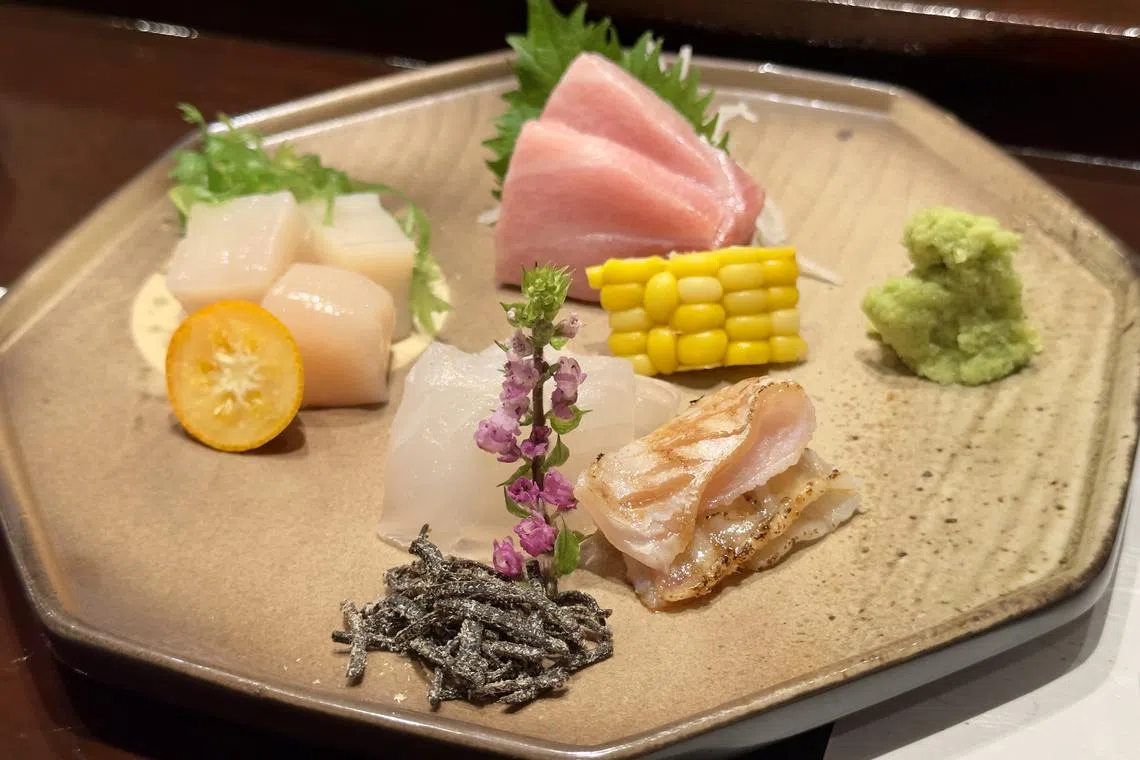
It’s worth topping up an extra S$15 for a decent mix of sashimi that includes tuna belly, scallop, white fish and chewy engawa. It’s not top-grade, of course, but good enough to satisfy a craving.
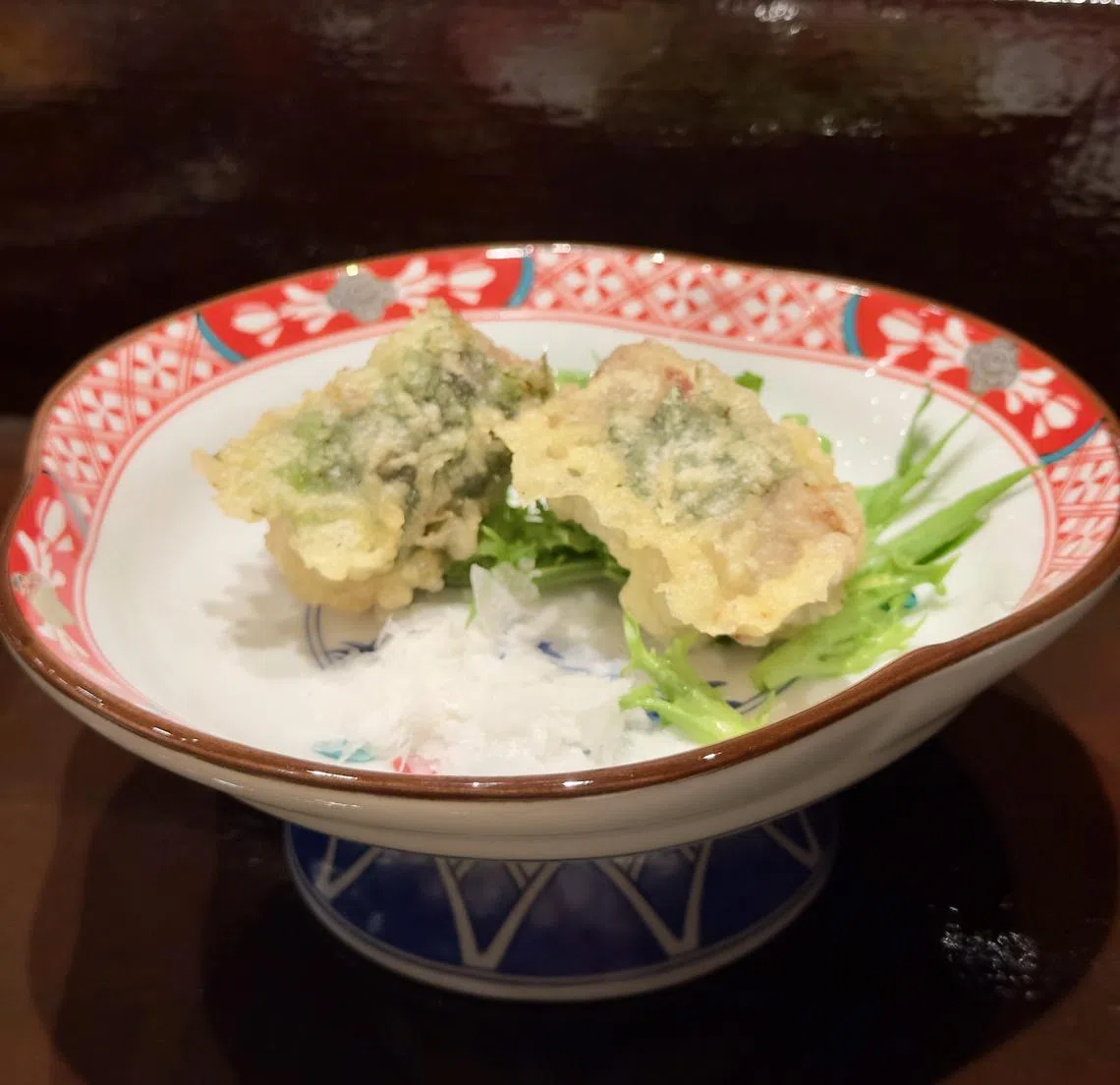
Among its hot starters, tempura of snow beef wins you over with melting-soft, pink-cooked fatty wagyu cubes quivering under their crunchy batter coating. Not so appealing is a gratin of ama ebi and awabi – pieces of shrimp and abalone mired in a thick magma of miso bechamel, covered in a layer of hot and chewy broiled cheese. The bechamel is so rich and distracting that the abalone could have worked from home and sent its cuttlefish underling in its place. No one could tell the difference.
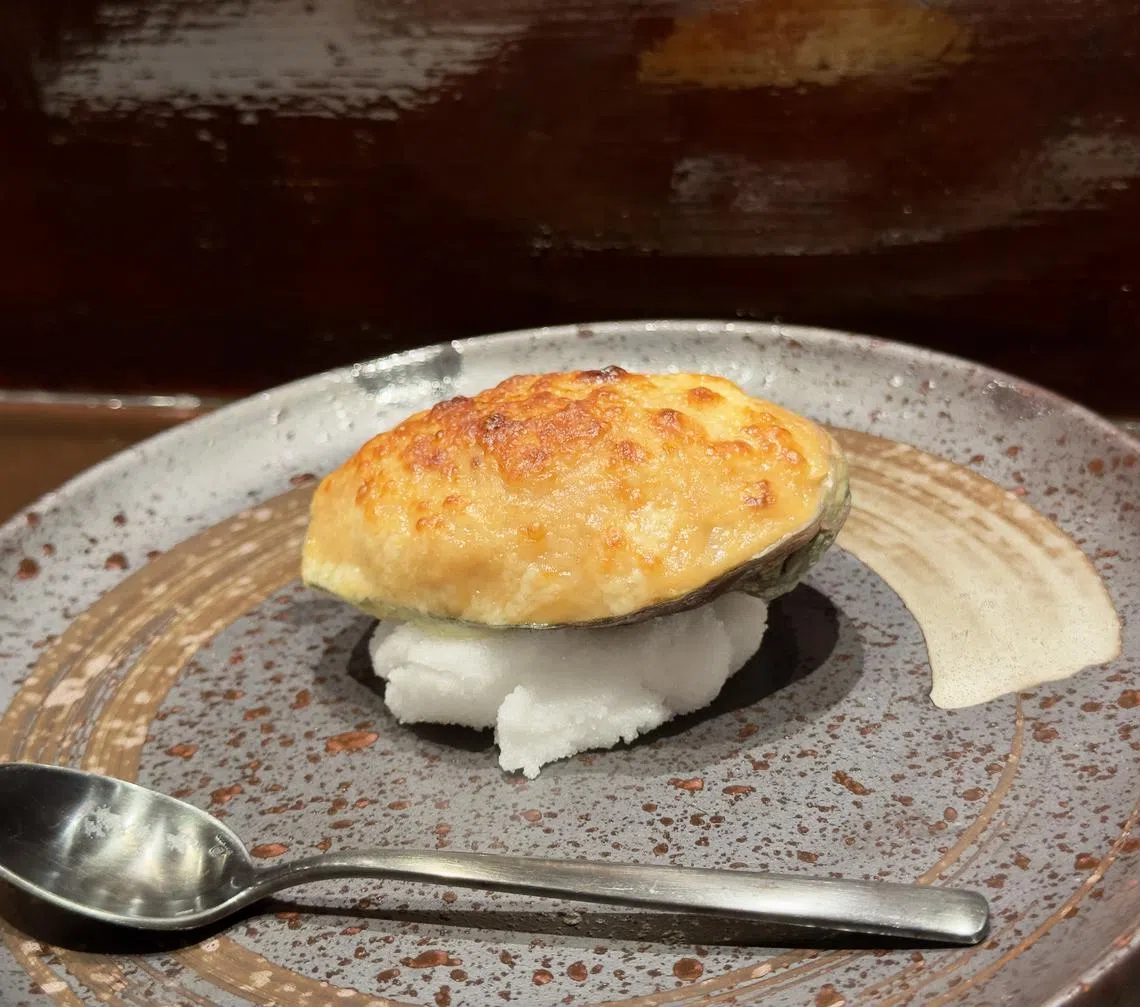
From the mains, you can pick Hokkaido chirashi (extra S$15). It can’t hold a candle to Aoki’s version, but it’s still a competent bowl of rice generously topped with ikura, scallops and a crab leg of average quality.
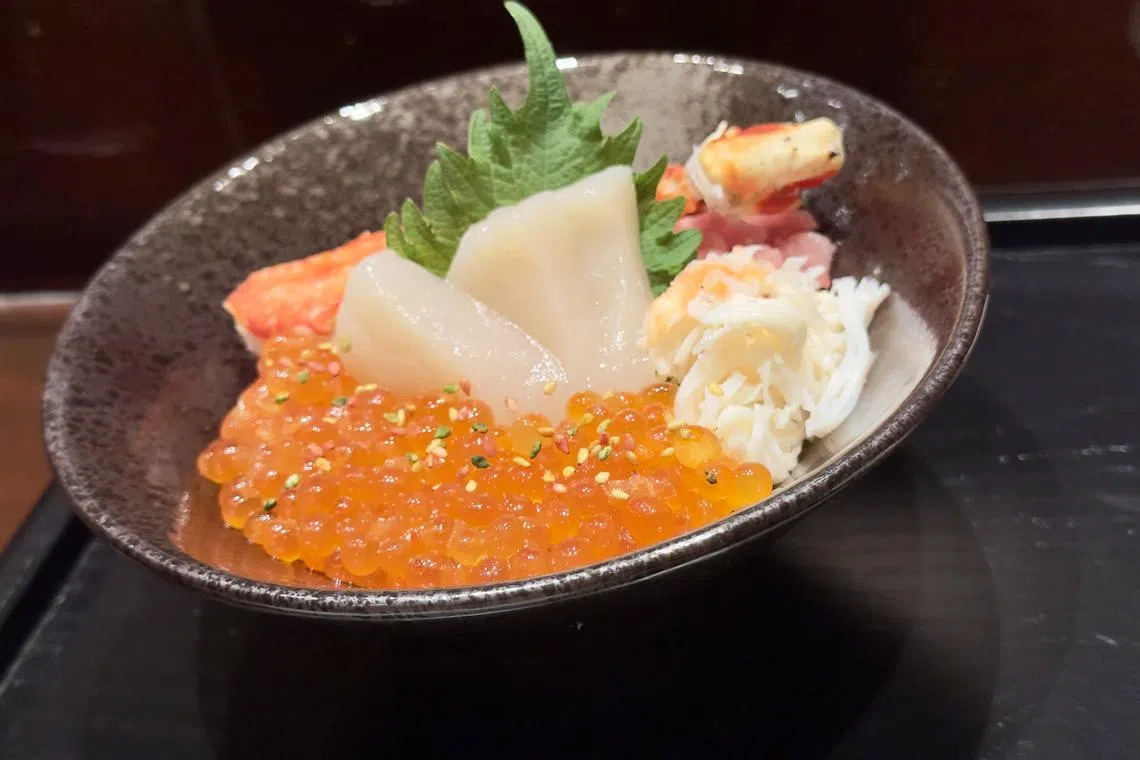
The surprising hit is crab ramen. All the flavour missing from the actual meat has been hiding in the broth – long brewed to extract maximum briny oomph, so milky-thick it clings to the fat, chewy noodles. And it doesn’t cost anything extra.
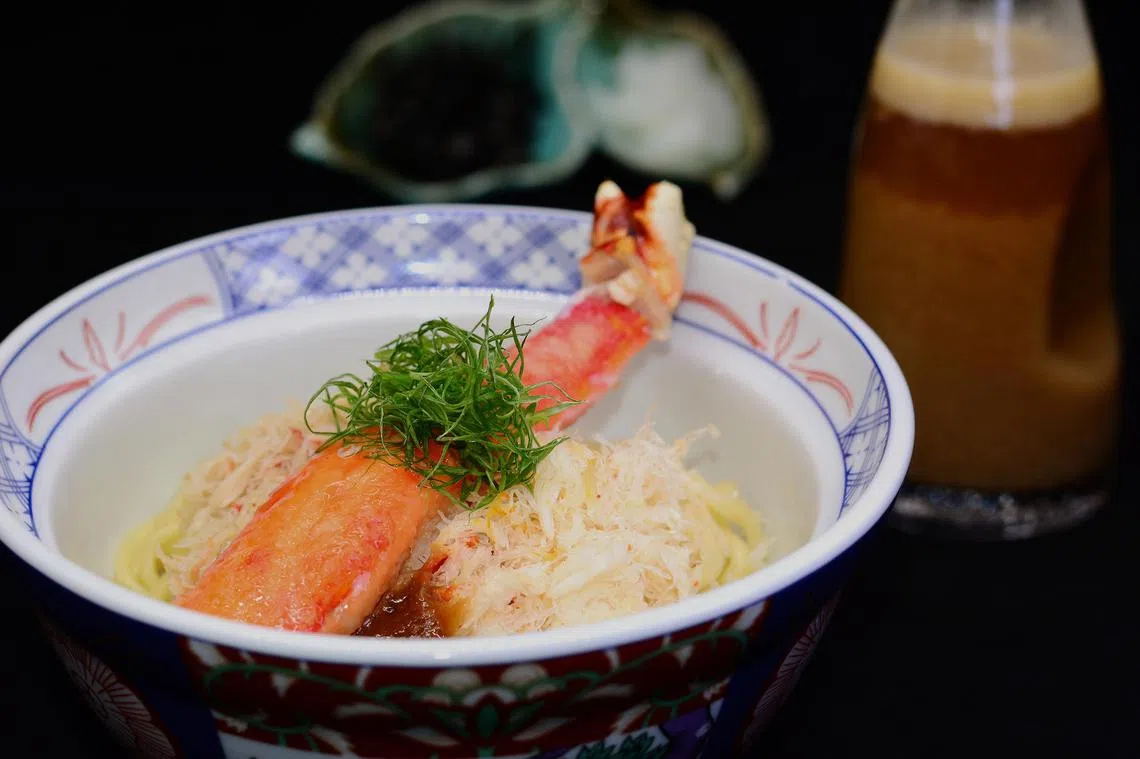
If your fragile disposition is wary of overflowing ikura rambunctiousness shattering your inner core, fear not as that seems to be a dinner omakase thing. We order the signature donabe that’s supposed to be the trigger, but we get an uneventful, clay pot of steaming rice interspersed with crab bits and topped with a golden brown fish fillet.
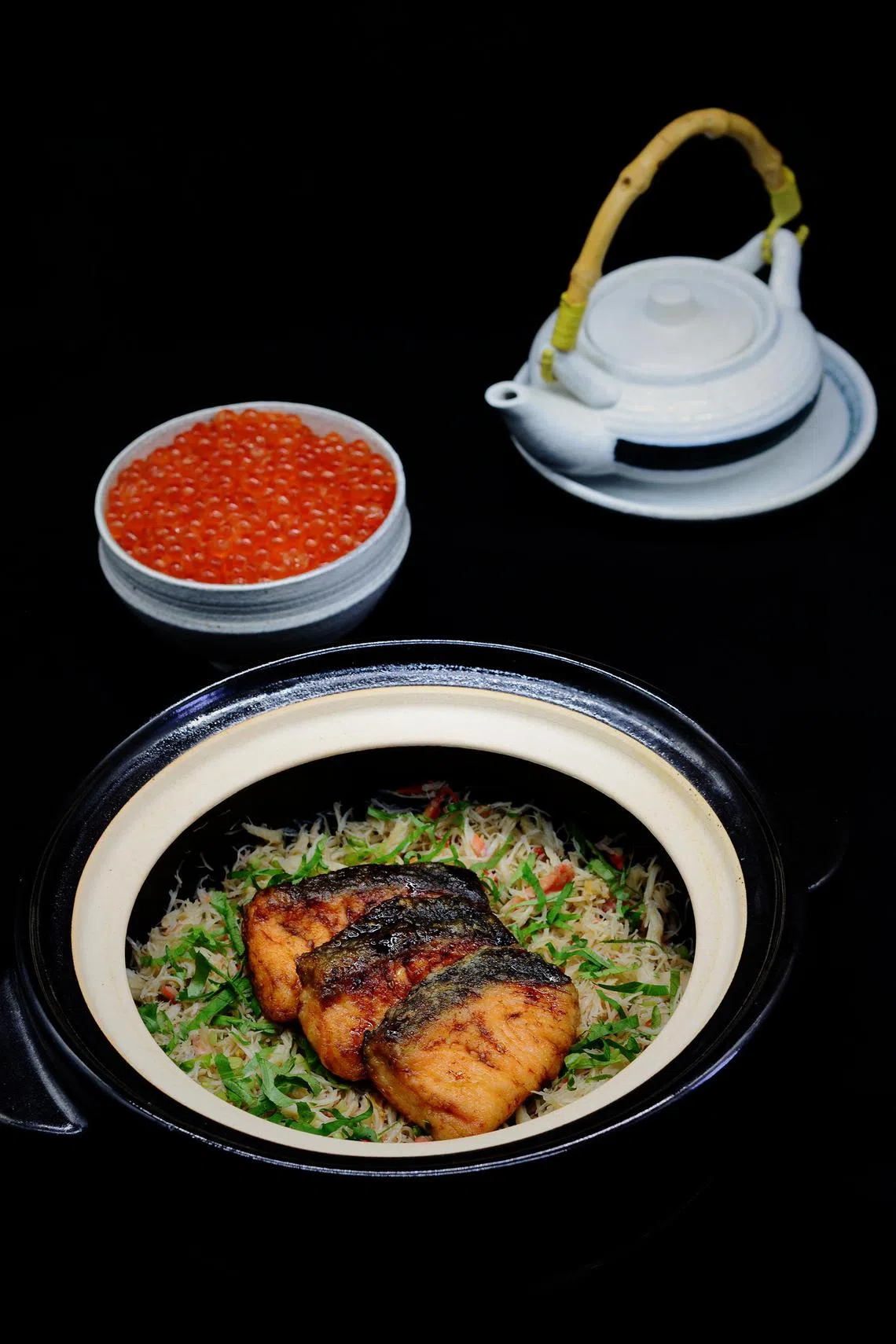
Slightly underseasoned perhaps in anticipation of salty ikura, we wait, but none comes. Then we realise it’s an S$18 add-on, and we don’t want to pay just to get yelled at for fun. But in a very sweet gesture, Kimura steps in with a little bowl of roe, gratis.
Such little touches, and effortless hospitality, are what draw you to Hachikyo (dessert is a monaka wafer filled with red beans and warabi mochi, or ice cream). Coupled with wallet-friendly, no-fuss cooking you can eat anytime, what else can you ask for? Maybe ear plugs, but don’t be a spoilsport.
Rating: 6.5
Decoding Asia newsletter: your guide to navigating Asia in a new global order. Sign up here to get Decoding Asia newsletter. Delivered to your inbox. Free.
Copyright SPH Media. All rights reserved.








